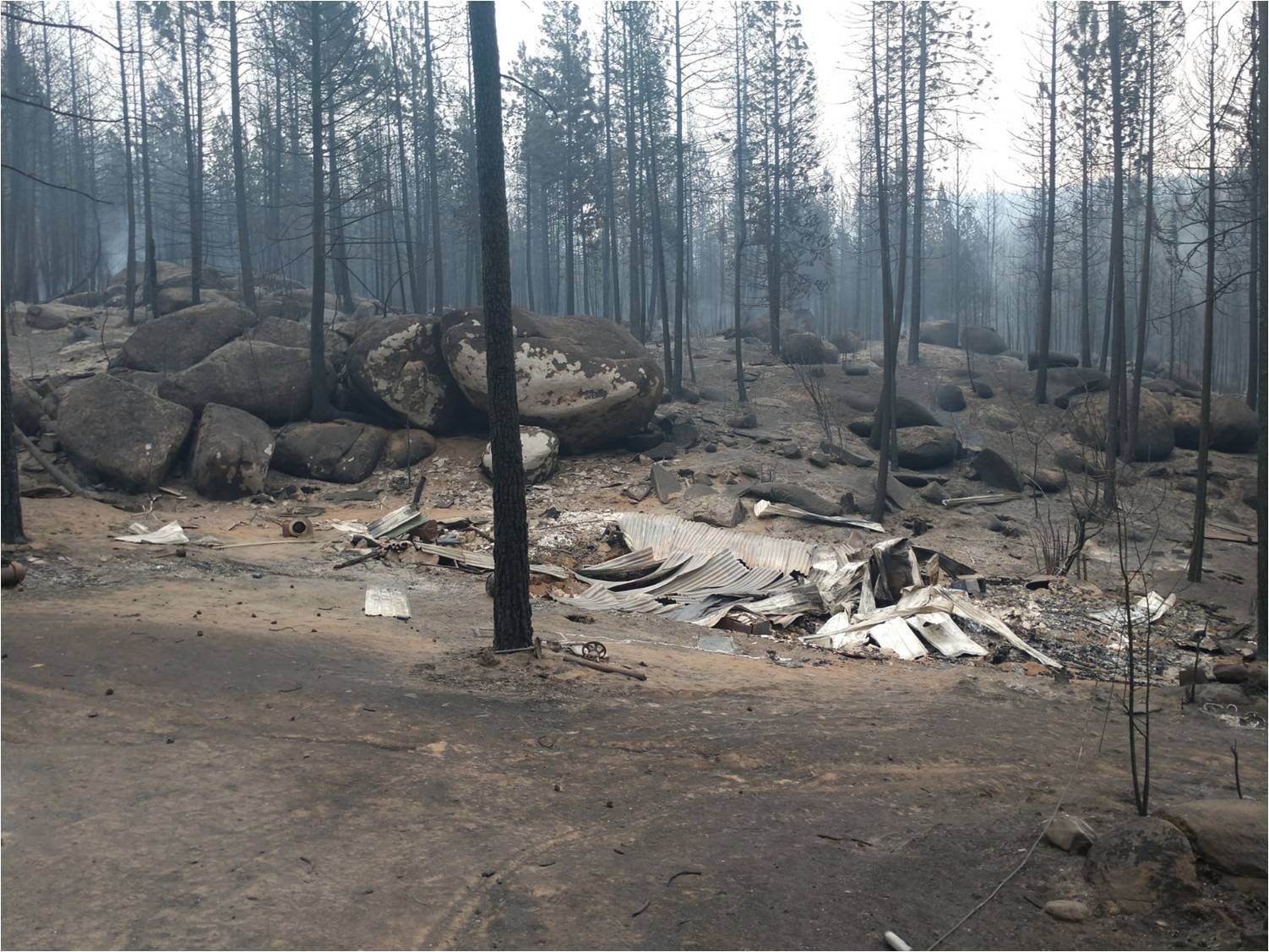 Last year one of my property listings, that included a small cabin, burned to the ground in the devastating Rail Canyon fire that consumed thousands of acres and multiple homes. The sad part of that story is that the older gentleman who owns the property didn’t have insurance and basically lost it all when it burned. We had the property under contract and were just a few days from closing when the fire killed the sale. The fire burned so hot up the canyon that every tree and shrub was consumed, leaving a virtual moonscape and a pile of twisted metal. A year has passed now, the green grass is emerging and we are under contract again on the same parcel, only this time it’s selling for half its original value.
Last year one of my property listings, that included a small cabin, burned to the ground in the devastating Rail Canyon fire that consumed thousands of acres and multiple homes. The sad part of that story is that the older gentleman who owns the property didn’t have insurance and basically lost it all when it burned. We had the property under contract and were just a few days from closing when the fire killed the sale. The fire burned so hot up the canyon that every tree and shrub was consumed, leaving a virtual moonscape and a pile of twisted metal. A year has passed now, the green grass is emerging and we are under contract again on the same parcel, only this time it’s selling for half its original value.
Just a short distance away, there is a home that actually survived that horrific blaze. The difference is that this owner was prepared. They had preemptively thinned trees and limbed up branches in a wide swath around the home and outbuildings. They had also maintained a nice green lawn that surrounded the home. The fire burned through their property, but stayed on the ground because they had removed all of the ladder fuels. The fire burned only grasses and brush until it came to the green lawn and stopped.
These two examples graphically illustrate the advantage of protecting your forest lands and home with preventive forestry practices that can make a forest more resistant to wild fire. There are some people who refuse to cut a single tree or don’t have the energy or means to do that back-breaking work. There are others who strive to make that process a constant effort, doing a little at a time, which cumulatively adds up for big dividends. When a property is thinned properly, the remaining trees grow faster and they are much more immune to beetle damage and fire when it occurs.
Now is that time of the year when it is still wet and cold enough to burn some of those piles you have accumulated, but be careful, since it dries out quickly in the spring. I prefer to do my burning in late fall when I’m more sure it won’t get away from me. Create a forestry plan and then stick to your plan which should include yearly maintenance to reduce fuel loads. You will feel and be safer and your forest will thank you!

Jim Palmer, Jr.
509-953-1666
www.JimPalmerJr.com

See my blogs at:
www.RealEstateMarketPlc.com
Two Multiple Listing Services
Professional Representation for Buyers & Sellers
Residential • Acreage • Residential Acreage
Waterfront • Ranch • Farm
© Copyright 2025 | All rights reserved | Privacy Policy
"We do not share any client data with third parties. Your personal information is kept confidential and is not disclosed to any outside organizations except as required by law or with your explicit consent."
